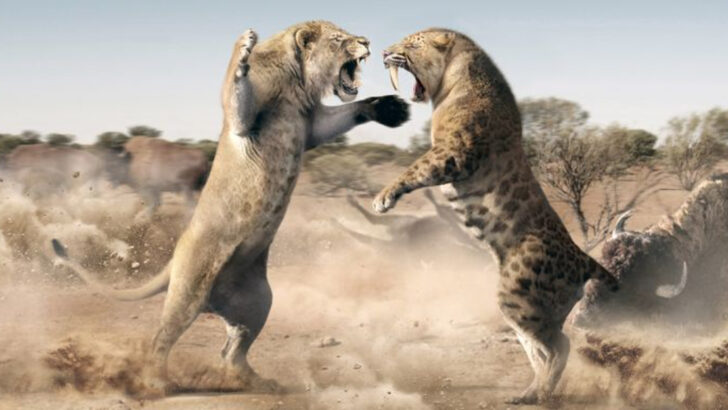America’s deadliest animals used to be even scarier.
Forget snakes and bears—try facing off with a saber-toothed cat or a short-faced bear the size of a car.
The wild wasn’t just dangerous 10,000 years ago.
It was downright prehistoric chaos.
Back then, predators didn’t creep quietly through forests.
They thundered across plains, jaws wide, claws ready, built for pure power.
And the prey? Just as massive. Just as wild.
So before today’s threats steal the spotlight, take a step back in time.
Let’s meet the ancient beasts that once ruled the land—
and learn how they shaped the animals we fear today.
Saber-toothed Cat
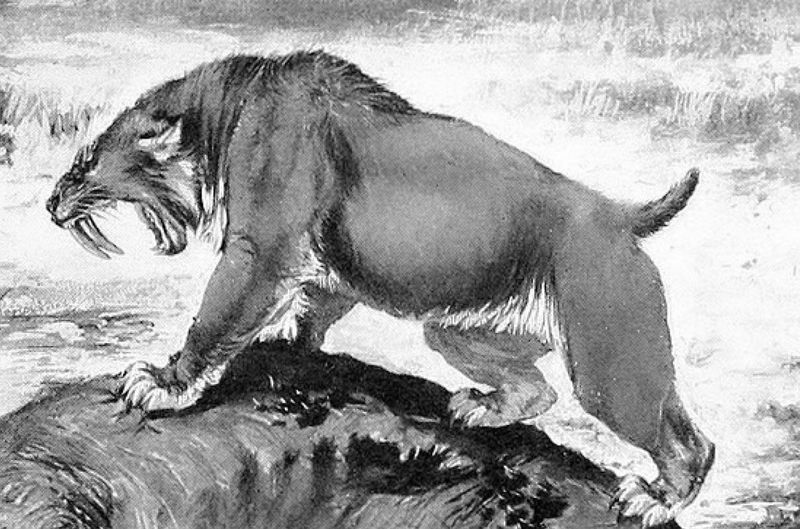
The saber-toothed cat, with its iconic long, curved canine teeth, prowled the prehistoric forests like a shadow. Imagine a creature that combined the stealth of today’s big cats with a ferocious power that could take down prey much larger than itself. These cats, often mistaken for tigers, had robust builds and short limbs.
Their muscular bodies were designed for ambush hunting in dense vegetation. Their fur, likely a patchwork of browns and grays, helped them blend seamlessly into their surroundings. This adaptation made them efficient predators, feared by many and rivaled by few.
American Lion
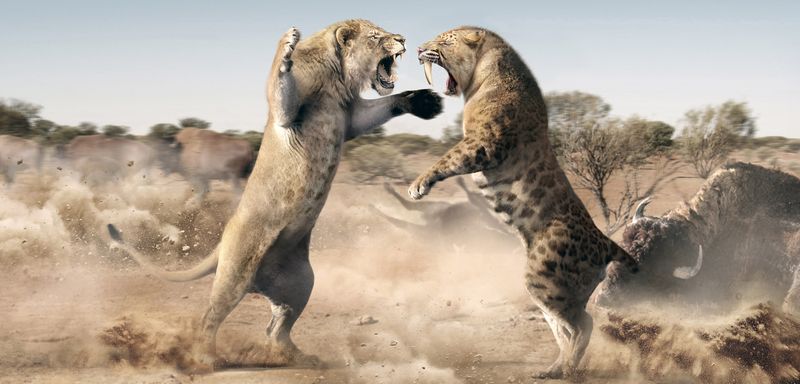
The American lion was a majestic giant, larger than any lion today. Picture a regal feline with a broad chest and powerful legs, roaming the open grasslands of prehistoric America. Its mane, possibly fuller than modern lions, fluttered in the winds as it surveyed its territory.
This apex predator could bring down bison and other large herbivores with its immense strength. Its tawny fur allowed it to blend with the golden hues of the grasslands, making it a perfect hunter in the vast, open landscapes. A true king of its domain, it commanded respect and awe.
Giant Short-faced Bear
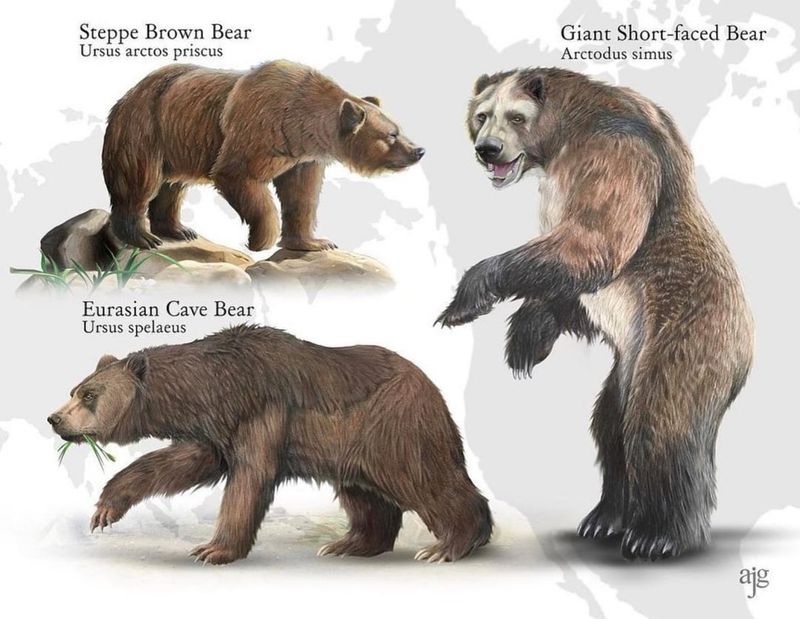
Looming large over the prehistoric tundra was the giant short-faced bear. Imagine a creature standing taller than any bear today, with a presence that commanded both fear and respect. This bear had a distinctive short snout, enhancing its forceful bite.
Its massive limbs were built for strength, allowing it to cover ground quickly in pursuit of prey. With fur that insulated it against the harsh cold, it thrived in icy environments. This predator’s formidable size and speed made it a dominant force, ruling over its frozen realm with an iron paw.
Dire Wolf
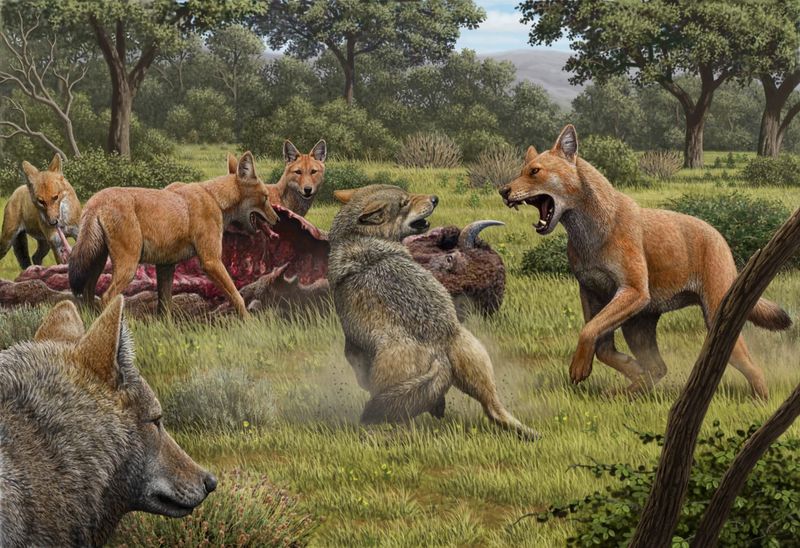
In the shadows of ancient forests, packs of dire wolves prowled with an intelligence and cunning that still captivates imaginations today. Larger and more robust than their modern descendants, these wolves had powerful jaws and sharp teeth for tearing into flesh.
Their coats were thick and likely varied in color, ranging from grays to blacks, providing camouflage in diverse environments. Known for their pack hierarchy, they hunted in coordinated teams. Their howls echoed through the icy winds, a chilling reminder of their dominance and unity as formidable hunters.
Mammoth
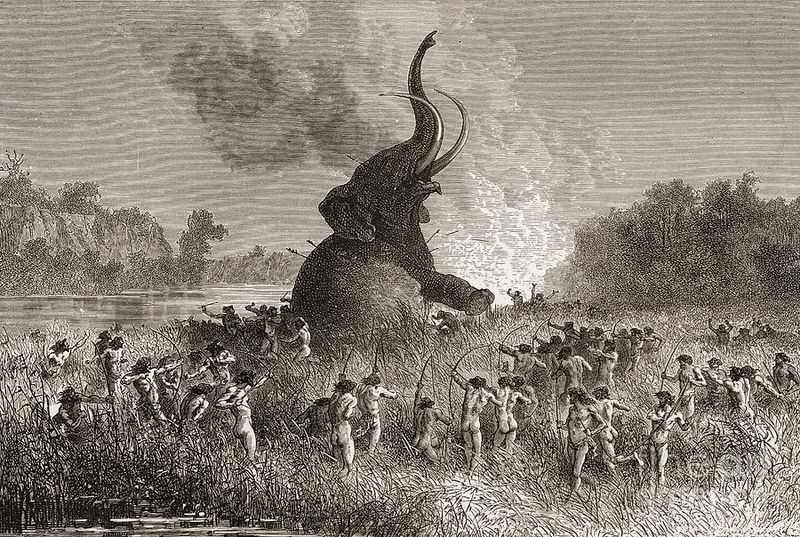
The mammoth, with its magnificent tusks and shaggy coat, was a symbol of the Ice Age’s grandeur. Picture an enormous creature, its long tusks curving elegantly as it moved through snowy expanses. Its thick fur was a natural defense against the biting cold, an adaptation to its frigid environment.
These behemoths traveled in herds, using their tusks to forage and their massive size to ward off predators. Their presence was monumental, shaping the landscape and the lives of early humans who hunted them. The mammoth’s legacy remains etched in the annals of history.
Glyptodon

The glyptodon was nature’s tank, with an armored shell protecting it from predators. Imagine a creature resembling a giant armadillo, but much larger and more formidable. Its armor was composed of bony plates, providing a near-impenetrable defense.
Short, sturdy legs supported its hefty body as it roamed the prehistoric savanna. Despite its size and strength, the glyptodon was a herbivore, grazing peacefully on plants. The striking contrast of its defensive capabilities with its gentle diet paints a picture of nature’s balance and ingenuity in design.
Smilodon Populator
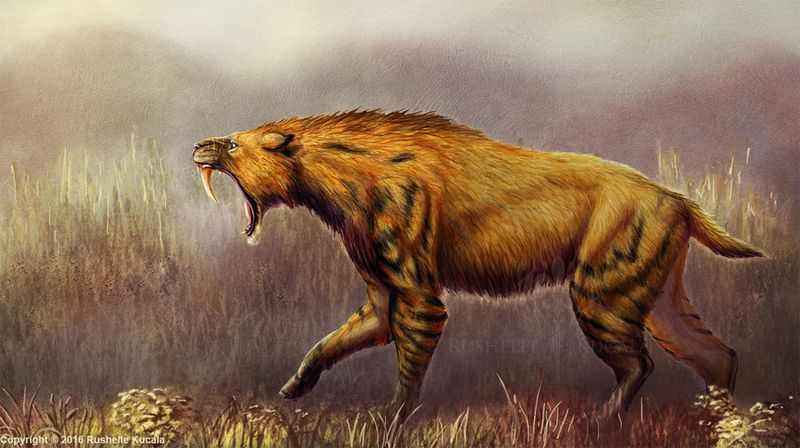
The Smilodon populator, a cousin to the saber-toothed cat, ruled the jungles with an awe-inspiring presence. Picture a cat with even longer saber teeth, capable of delivering deadly bites to its prey. Its build was robust, with powerful limbs and a compact frame.
This predator thrived in dense jungles, its roar echoing through the foliage as a warning to rivals. Its coat, likely a mix of earthy tones, provided perfect camouflage in the dappled sunlight. The Smilodon’s grace and power were unmatched, making it a true marvel of prehistoric wildlife.
American Cheetah

The American cheetah was a swift and graceful creature, its speed unrivaled even in ancient times. Imagine a sleek feline, built for the chase, racing across open plains with unmatched agility. Its body was slender, designed for speed, with long legs propelling it forward.
This predator was a master of acceleration, its movements fluid and precise. Its spotted coat helped it blend into the tall grasses, a stealthy hunter in its domain. This cheetah’s legacy lives on in the echoes of its swift pursuits, a symbol of mastery in motion.
Giant Ground Sloth
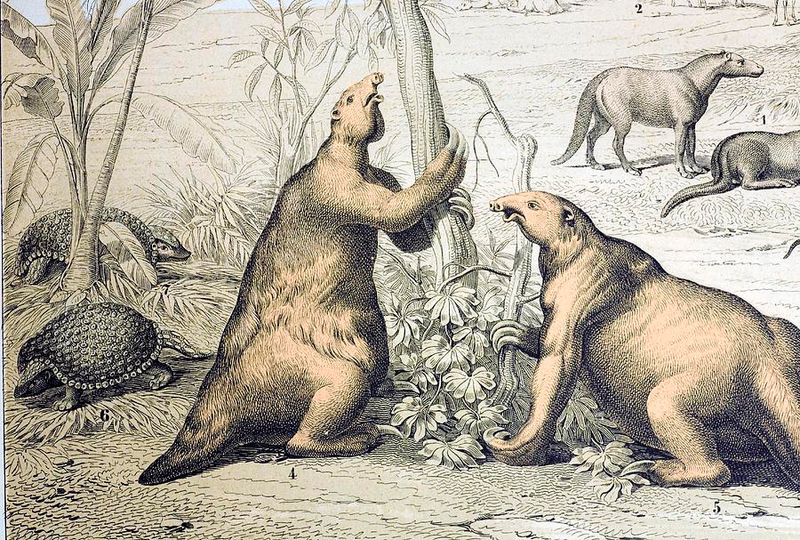
The giant ground sloth was a gentle giant, towering over the prehistoric forests with a slow and deliberate grace. Visualize a creature with enormous claws, used not for hunting, but for reaching high branches and leaves.
Its size was imposing, yet its nature was peaceful, feeding on a diet of plants. This sloth’s slow movements belied its strength, as it could uproot small trees with ease. The giant ground sloth’s presence was a testament to the diversity of life, a unique marvel in a world of giants and predators.
American Mastodon
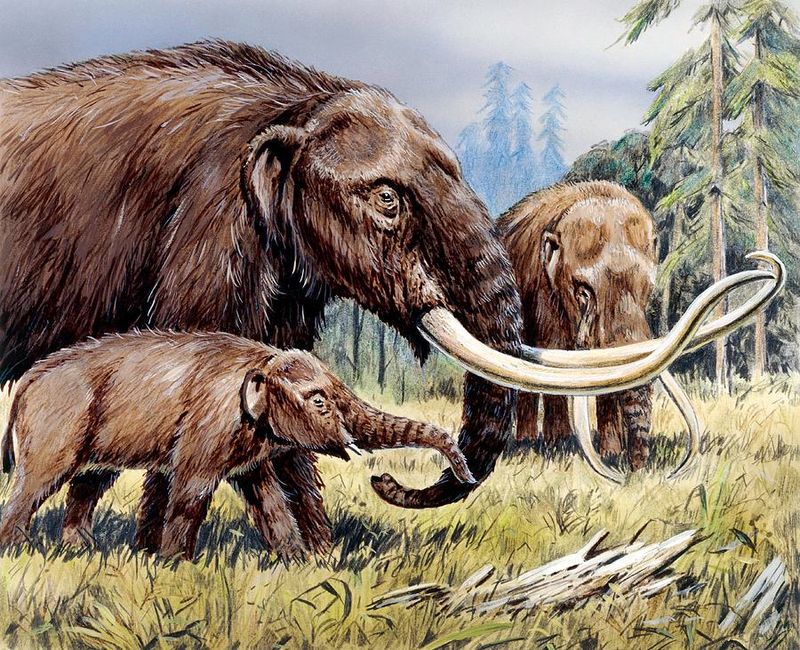
The American mastodon roamed the dense forests with an air of ancient wisdom. Imagine a creature similar to a modern elephant, but stockier, with straighter tusks and a shaggy coat. Its presence was both awe-inspiring and intimidating.
These herbivores fed on leaves and branches, their strong trunks aiding in foraging. The mastodon’s environment was lush, filled with the sounds of nature. Its legacy is a testament to the majesty of prehistoric life, a creature that left an indelible mark on the landscape it once called home.

